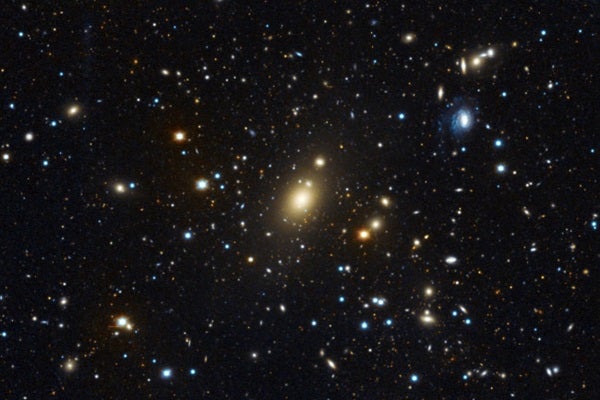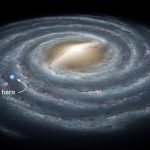Key Takeaways:
- Astronomers discovered the largest black hole ever, 40 billion times the sun’s mass, located in a supermassive galaxy.
- The supermassive galaxy was likely formed by the collision of at least 8 smaller galaxies over billions of years.
- This finding helps confirm our understanding of quasars, distant galaxies with massive black holes that shine very bright.
- Elliptical galaxies are formed by merging spiral galaxies, and cored elliptical galaxies are formed by merging elliptical galaxies.
- The discovery is exciting because it allows us to study a giant black hole close by and improve our understanding of these mysterious objects.
The largest black hole ever discovered by astronomers is 40 billion times more massive than the sun, or nearly two-thirds the mass of all Milky Way stars. The massive black hole is located within a supermassive galaxy that was most likely created by the collision of at least eight smaller galaxies.
At the center of the Abell 85 galaxy cluster is the massive elliptical galaxy Holm 15A. In order to determine the mass of the central black hole in the galaxy, a group of astronomers developed a model and took a picture of the stars in Holm 15A’s orbit. In a recent paper that was uploaded to the preprint site arXiv and is scheduled for publication in The Astrophysical Journal, the team detailed their findings.

Making monster galaxies
An elliptical galaxy can be created when two spiral galaxies, such as the nearby Andromeda Galaxy and our Milky Way, collide. These elliptical galaxies can collide and then merge again to form even larger elliptical galaxies in crowded environments like galaxy clusters. Larger black holes created by the combination of their central black holes can drive huge areas of nearby stars to the boundaries of the newly formed galaxy.
The resulting extra-large elliptical galaxy usually doesn’t have much gas from which to form new stars, so its center looks pretty bare after its black hole kicks out nearby stars. Astronomers call these huge elliptical galaxies with faint centers “cored galaxies.” Large cored galaxies are frequently found in the centers of galaxy clusters.
The massive galaxy at the center of its home galaxy cluster, Holm 15A, must have formed from yet another merger of two already enormous cored elliptical galaxies, according to the authors of the new study. This suggests that over billions of years, Holm 15A most likely formed from the merger of eight smaller spiral galaxies. Ellipstical galaxies are formed by pairs of spiral galaxies, cored elliptical galaxies are formed by pairs of those ellipticals, and Holm 15A is formed by a pair of cored galaxies. The black hole at the center of the system was also formed by this series of mergers; it is a monster the size of our solar system with a mass equivalent to 40 billion suns.
Explaining quasars
The discovery of the largest black hole ever measured excites the researchers.
One of the study’s authors, Jens Thomas, an astronomer at the Max Planck Institute for Extraterrestrial Physics in Germany, said, “Just imagining a black hole that is so huge is cool.”
The discovery, however, is also intriguing because it strengthens our understanding of quasars—distant galaxies with massive central black holes that release enormous amounts of light when they accrete—by consuming nearby matter. Astronomers studying quasars came to the conclusion that some of these distant quasars had to be extremely bright black holes with masses of at least 10 billion solar masses.
According to study author Roberto Saglia of the Max Planck Institute, “finally, we managed to find one nearby, which sort of confirms that our idea of how quasars work and how the accretion on black holes can explain them makes sense.”


